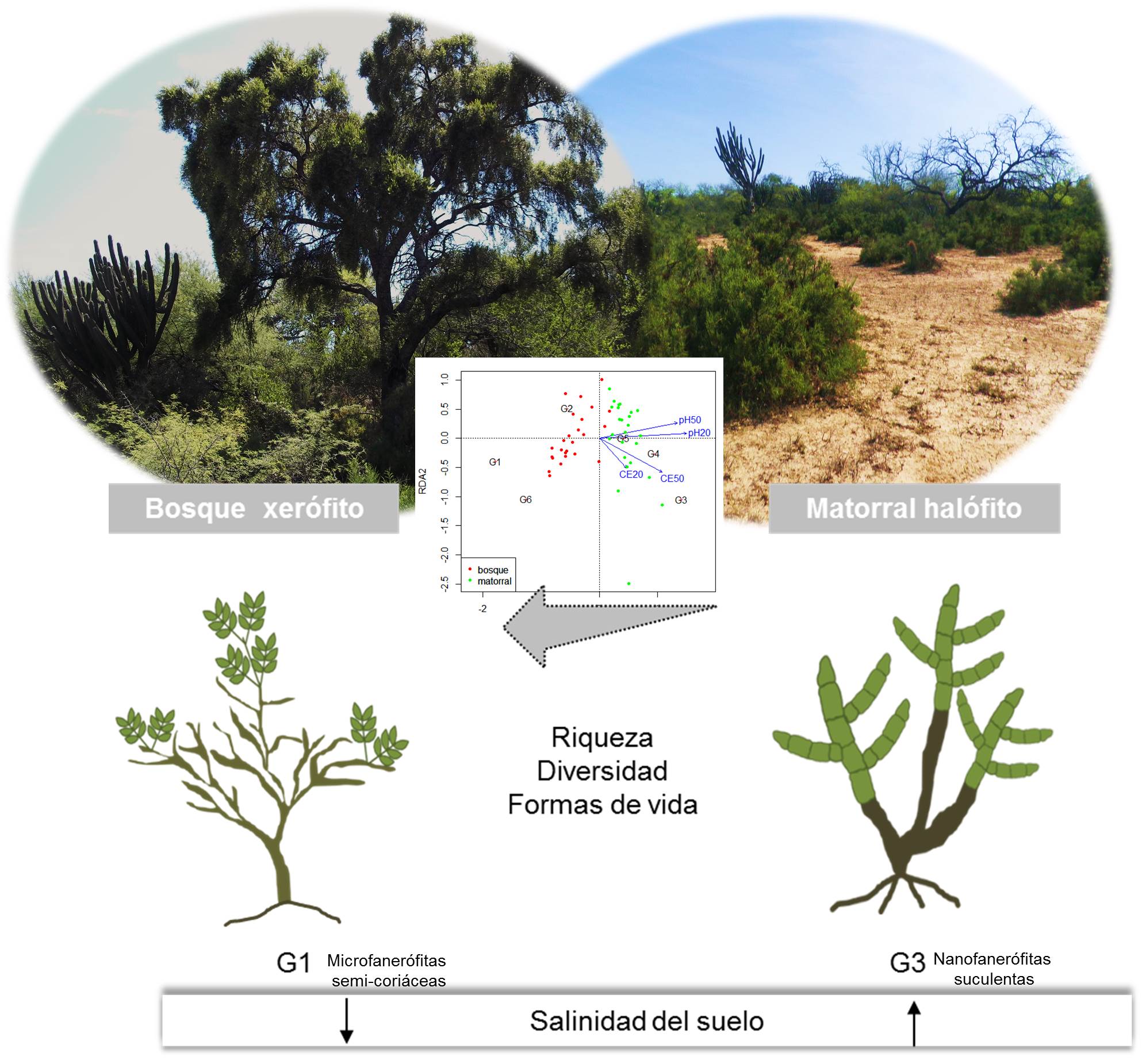Distribution of succulent-leaves nanophanerophytes in two woody plant communities of the semi-arid saline Chaco
DOI:
https://doi.org/10.31055/1851.2372.v54.n2.24372Keywords:
Chaco serrano, Comechingón people, edible plants, ethnobiology, food sovereignty.Abstract
Background and aims: In the semi-arid saline Chaco, Argentina, the nanophanerophytes presence and the succulent leaf type are frequent. To determine if the occurrence of both traits is related to soil salinity, this paper describes the distribution of life forms and leaf types in relation to soil salinity between two woody plant communities.
M&M: Sampling of woody plant and soil was carried out in both a scrubland and a xerophilous forest on 25 subplots of 100 m2 at each site. Electrical conductivity and pH were determined on 50 cm deep. Stratification and plant cover, abundance, species richness and diversity index were described. The degree of similarity between sites was evaluated according to the number of nanofanerophyte and succulent-leaves shared species, using the Sørensen coefficient. The species were grouped considering simultaneously their life form and leaf type. Relationships between salinity and plant groups were evaluated by means of redundancy analysis.
Results: Richness, diversity and structural complexity were greater in the forest. The similarity between sites was low. Succulent-leafed nanophanerophytes were dominant in the scrubland, with high salinity and pH. In the forest, sclerophyllous–leafed microphanerophytes were dominant, with low salinity and pH.
Conclusion: The distribution of succulent-leaves nanophanerophytes presented differences according to the salinity of the soil of both woody communities.
Downloads

Published
How to Cite
Issue
Section
License
Provides immediate and free OPEN ACCESS to its content under the principle of making research freely available to the public, which fosters a greater exchange of global knowledge, allowing authors to maintain their copyright without restrictions.
Material published in Bol. Soc. Argent. Bot. is distributed under a Creative Commons Attribution-NonCommercial-ShareAlike 4.0 International license.








